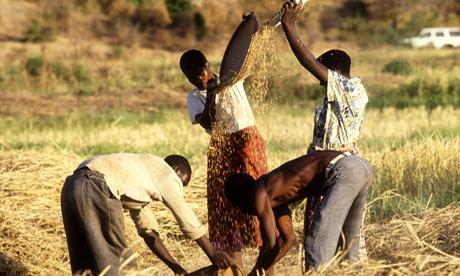Sharpening the focus on gender in agriculture
A new FAO toolkit aims to sharpen the focus of anti-hunger and development efforts by helping countries to gather more accurate information on the roles and responsibilities of men and women in agriculture

© FAO/A. Conti
15 April 2010, Rome – The Agri-Gender Statistics Toolkit, developed in response to a request from the African Commission on Agricultural Statistics (AFCAS), offers step-by-step, example-driven guidance on how to collect gender statistics, or sex-disaggregated data, on agriculture, livestock production, fisheries and forestry.
The database is designed for a wide range of users who may influence development planning, including agricultural statisticians, researchers, policy planners and gender advocates.
Gathering statistics on how women’s socio-economic conditions differ from those of men in the context of their agricultural work is essential to efforts to improve the planning and sustainability of development policies and programmes.
Key data may reveal disparities in such conditions as men’s and women’s access to resources and exposure to food insecurity, according to Diana Tempelman, Senior Officer for Gender and Development with the FAO Regional Office for Africa.
“With more specific information, policy makers can provide greater support to those who lack access to, and control over, agricultural resources. They can help women to achieve greater equality and food security,” Tempelman says.
“In the past, users and producers of agricultural statistics often noted that the information compiled did not reflect the actual work and responsibilities which women have in agricultural production.”
The contribution of women and girls to agricultural production often is underreported because much of what they produce is cultivated on land holdings that are formally headed by men, and thus statistically recorded as being produced by the male head of the household.
The first edition of the toolkit includes examples of gender-relevant questions and table formats used in agricultural censuses in fifteen African countries between 1993 and 2006. It shows users how they can formulate questions and tables to better reflect the roles, activities, responsibilities, opportunities and constraints faced by men and women in agriculture.
A ‘living document’
The database covers topics like agricultural population and households, access to resources, production and productivity, labor and time use, the destination of agricultural produce, income and expenditures, membership in farmer organizations and indicators for food security and poverty.
Tempelman says the toolkit is designed to be “a living document,” which will be expanded and enhanced as users send in observations and comments on how to improve its approach to data collection.
Media contact ![]()
Charmaine Wilkerson (Rome)
(+39) 06 570 56302
[email protected]
